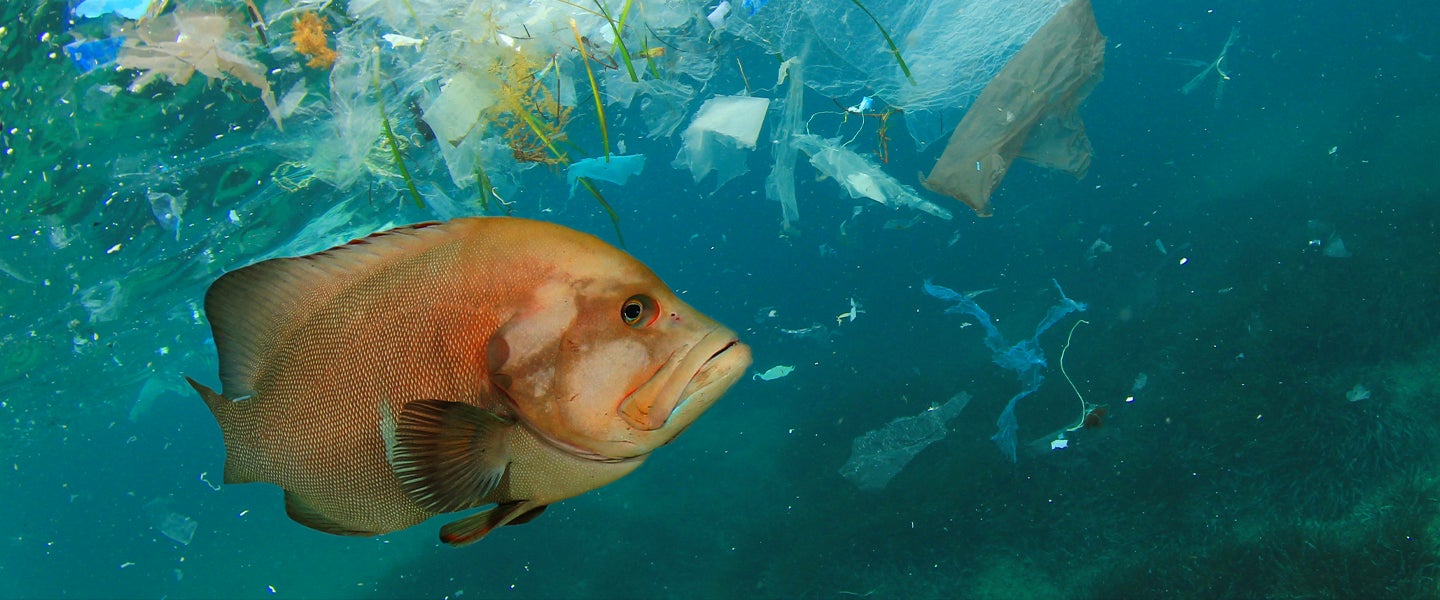Bad news, Mother Nature: Researchers at the University of Exeter and Plymouth Marine Laboratory recently examined 50 animals from 10 different species of dolphins, whales and seals, and they found so-called microplastics in every single one of them.
“It’s shocking — but not surprising — that every animal had ingested microplastics,” said lead author Sarah Nelms in a press release. Nelms further explains, however, that we still have a lot to learn about microplastics. “We don’t yet know what effects the microplastics, or the chemicals on and in them, might have on marine mammals,” she said in the same press release. “More research is needed to better understand the potential impacts on animal health.”
But we do know at least some stuff about microplastics, including the fact that they’re all up in my Goddamn sushi, so let’s talk through everything you need to know.
What even are microplastics?
Microplastics are basically any plastic debris that’s less than five millimeters in length, or around the length of a sesame seed. They come from various sources, including larger plastic debris that has broken apart into smaller pieces. For example, in the study mentioned above, the researchers explain that nylon made up more than 60 percent of the microplastics they found, adding that the sources of this nylon may include fishing ropes and nets, clothing microfibres and toothbrush bristles. Studies also show that tires and road-wear particles, which are often washed down storm drains when it rains, are the absolute largest source of microplastics.
And these microplastics are all up in the ocean, you say?
Yeah, we already know that they’re absolutely flooding into the ocean: A 2015 study, for instance, attempted to measure how much microplastic is in the ocean, and they ended up estimating that the number of particles in 2014 ranged from 15 to 51 trillion pieces, weighing between 93,000 and 236,000 metric tons.
However, studies also show that microplastics have made their way into rivers, lakes, and most recently, even groundwater. Basically, as I explained in a recent article about everything you should never flush down the toilet, microplastics can sneak through the filters at wastewater treatment plants, since they’re incredibly small. This means any microplastics that accidently wash down the sink or flush down the toilet will inevitably make their way into one of the world’s many waterways.
And then the animals in those waterways eat them?
Well, they live in the water, and the water is totally filled with microplastics, so they certainly ingest them somehow. And oftentimes, bigger marine animals, which feed on smaller marine animals, accumulate the most microplastics.
Worse yet, while we still have a lot to learn, these microplastics seem to really harm the animals that consume them. Studies even suggest that microplastics can alter gene expression, cause inflammation in tissues and affect reproductive success in marine animals, all of which sucks big time, both for the animals themselves, and for anyone looking forward to still being able to eat them in the near future.
Shit. So what happens when I eat these plastic-filled animals?
The unfortunate answer is that we’re not really sure yet, but a recent study found microplastics in human stools for the first time ever, which means we’re definitely ingesting them. “I’d say microplastics in poop are not surprising,” Chelsea Rochman, an ecologist at the University of Toronto, told National Geographic in response to these findings. “For me, it shows we are eating our waste — mismanagement has come back to us on our dinner plates. And yes, we need to study how it may affect humans.”
OH GOD I HAVE TO STOP EATING SUSHI DON’T I
Slow down there, buddy. Yes, it’s important to be informed about the fish you eat, which you can read up on in our recent ranking of sushi. And yes, you should probably avoid eating sushi for every meal (I know, it’s a bummer). But as it stands, (1) we really don’t know enough about how microplastics might affect us to say that you should stop eating seafood altogether; and (2) you’re probably going to end up filled with microplastics no matter what you eat, since new research found that humans consume about 114 plastic microfibers with each meal (seafood or otherwise) simply due to plastic-filled household dust that settles on their plates. In fact, the research also found that dust is a bigger source of microplastic than mussels.
This does not make me feel better at all in any way.
Yep, we’re all screwed, so enjoy our increasingly plastic-y world while you still can. Yippee!

